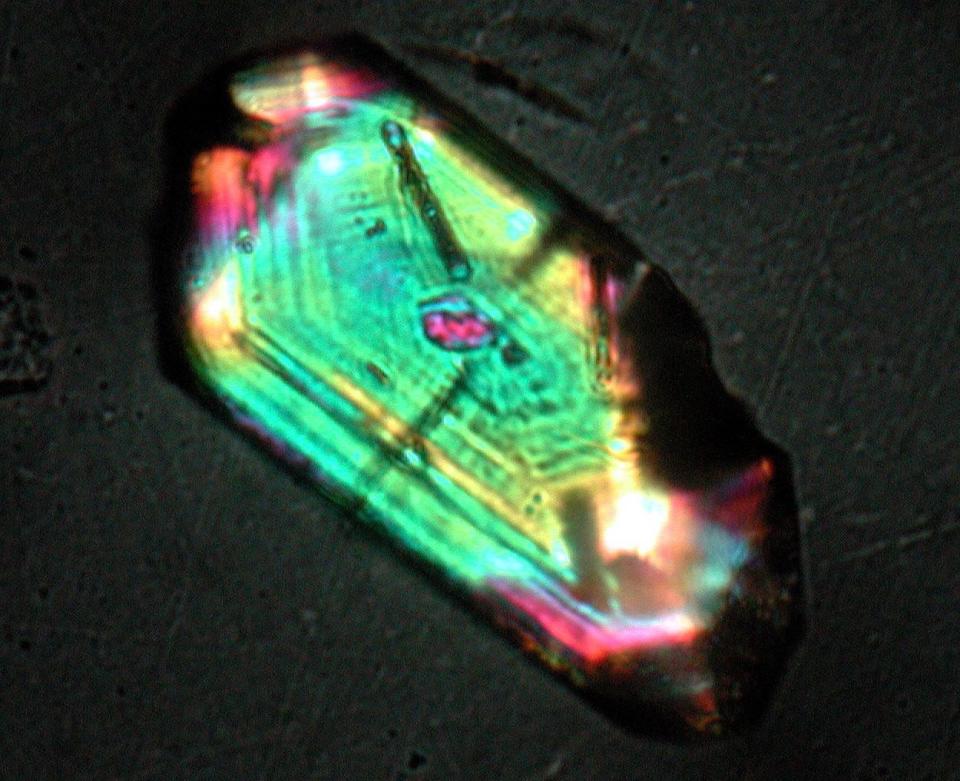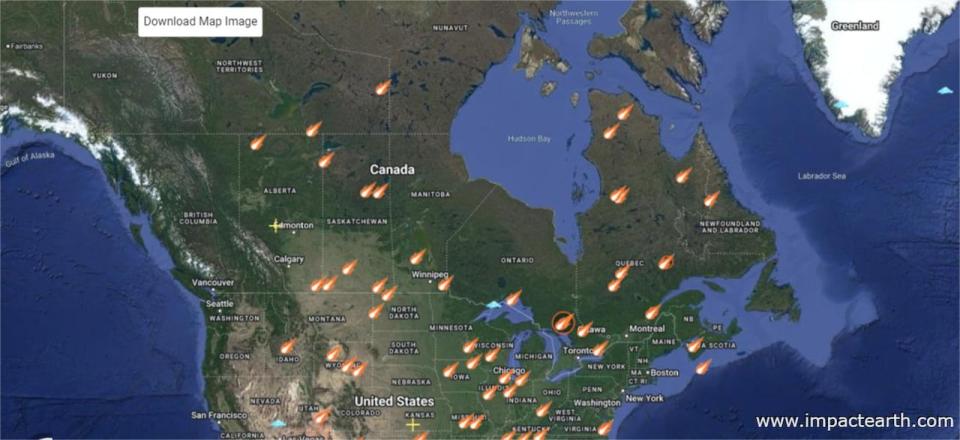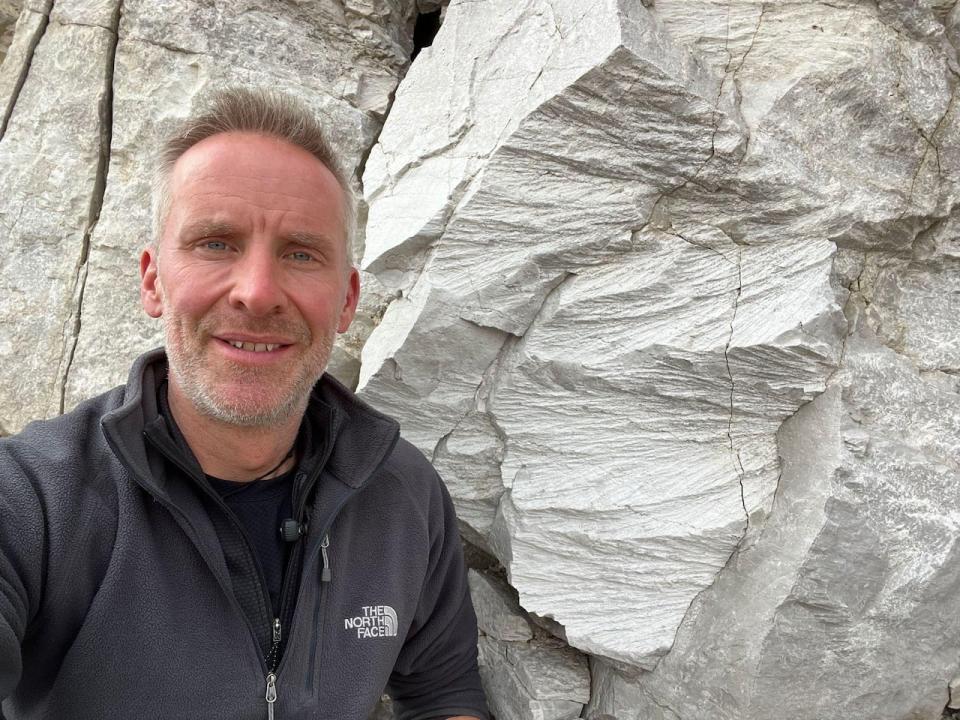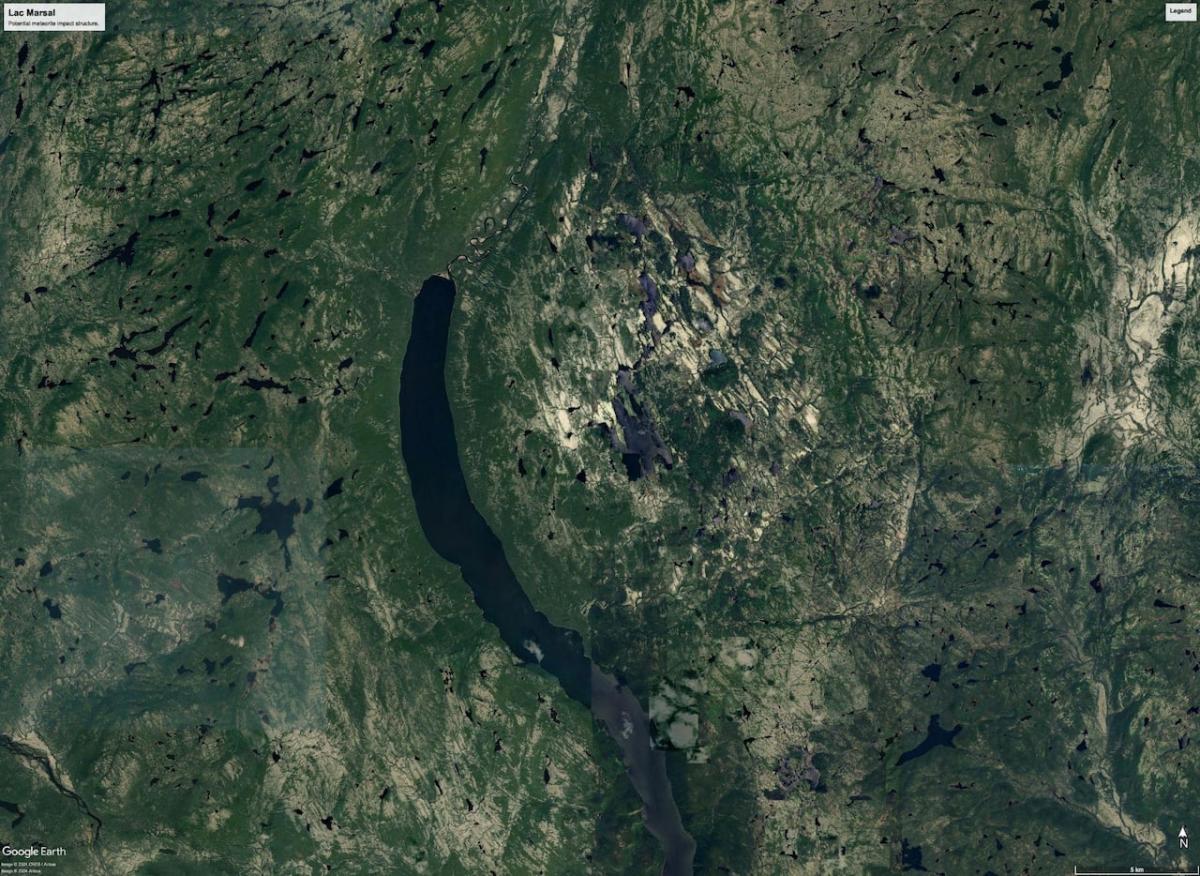When Joël Lapointe was wandering with his Google Maps cursor to plan his camping vacation in Quebec’s Côte-Nord region, he stumbled across a pit.
About 15 kilometres in diameter, he said something about its curve seemed suspicious.
He then saw a ring of small mountains about eight kilometres in diameter surrounding Marsal Lake, about 100 kilometres north of the village of Magpie, Que.
Lapointe turned to professional researchers, eventually getting in touch with French geophysicist Pierre Rochette, who’s now part of a team of scientists investigating the site as a potential meteorite impact crater.
“Looking at the topography, it’s very suggestive of impact,” said Rochette, with the Centre de recherche en géosciences de l’environnement in Aix-en-Provence, France.
Having already received samples from the site, Rochette says at least one contains zircon — a resistant mineral that transforms under the effect of an impact.

This enlarged image shows a 0.05-millimetre-long zircon that was produced by the violent impact of an ancient meteorite. (Stanford University/Getty Images)
The analyses are encouraging, but not yet conclusive.
He says the discovery of such a site would be “major” since the last meteorite of this size was discovered in 2013.
A ‘link between Earth and the outside universe’
Formed when a meteorite crashes into the surface of a planet at thousands of kilometres per hour, an impact crater is forged from shockwaves which melt and recrystallize rock, according to NASA.
Some craters can date back millions or even a hundred million years, says Tara Hayden, postdoctoral associate at Western University’s department of Earth sciences.
She says the meteorites can vary in type and could come from ancient planets, or some of the earliest solar system material.
“It could tell us about when it was delivered to Earth,” said Hayden. “That’s the wonderful thing about impact craters. We get to have this link between Earth and the outside universe.”
31 craters already identified in Canada
Thirty-one of the world’s nearly 200 confirmed impact craters are in Canada, says Gordon Osinski, an Earth sciences professor at Western University.
He says they’re often found in older rocks and nearly a third of these sites are in Quebec.
With high levels of mining and mineral exploration in the province, he says there are a “lot of geologists looking around and occasionally making discoveries like this.”
While this new site is not a “smoking gun yet,” he says it’s promising enough for scientists to spend the time and money to visit.
“It’s quite easy with Google Earth these days to go on and find structures that are circular or semi-circular in origin. You know, nine times out of 10 they’re not [craters],” says Osinski.


An interactive map created by Gordon Osinski and Impact Earth has mapped out impact craters and deposits around the world. (Impact Earth)
Hopeful for 2025 visit
The next step is funding for research — something French and Canadian collaborators like Osinski need to apply for to set up a field trip to the remote site. He hopes to accompany the French team there in 2025.
The last time Osinski travelled to identify a crater was over a decade ago.
“It’s super exciting,” said Osinski. “It doesn’t happen too often.”


Gordon Osinski pictured at the Haughton impact structure in Nunavut. The rocks behind him with grooves are an example of shatter cones, which represent definitive proof of a crater. (Submitted by Gordon Osinski)
Before formally categorizing the site as a crater, he says the team would have to conduct several tests.
One of the indicators of a crater would be the existence of shatter cones, says Osinski, which look like grooves or lines on a rock’s surface.
“Those are essentially unequivocal evidence of meteorite impact,” he said.
Proving the site is a crater can also be completed by studying about half a dozen main criteria under a microscope, he said.
Osinski said Lapointe’s find is a “strong contender” and that he’s looking forward to a potential visit to the site next year.

